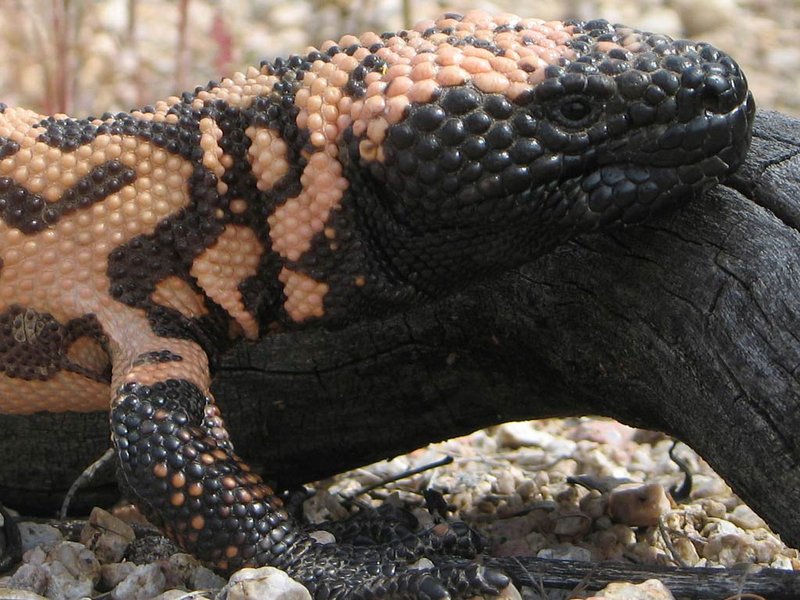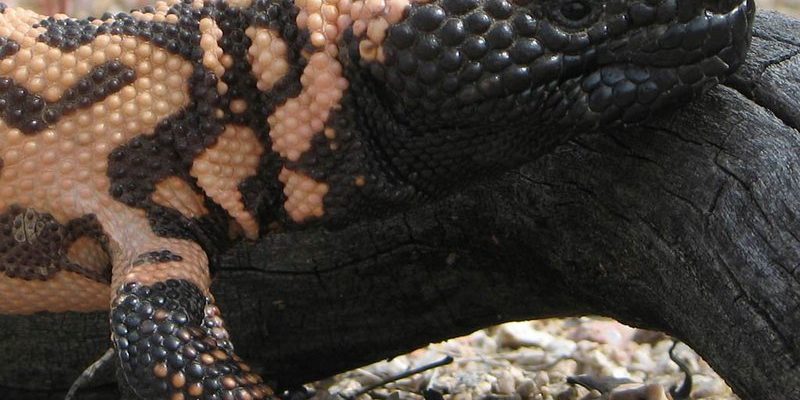
The Gila monster, found primarily in the deserts of the Southwestern United States and parts of Mexico, has a lot to teach us about evolution. Its features—the vibrant scales, the slow metabolism, and, of course, its venom—highlight both its adaptations to a harsh environment and its ancient lineage. So, grab your coffee, and let’s dive deep into the evolutionary history of this remarkable reptile.
What Is the Gila Monster?
The Gila monster (Heloderma suspectum) is a large lizard that can be easily identified by its stout body and striking coloration. Its scales are typically a mix of black, pink, and orange patches, making it a standout in the desert landscape. But beyond its appearance, this lizard has some fascinating traits that make it quite unique.
One of the most interesting aspects of the Gila monster is its venom. Unlike most lizards, which rely on speed or camouflage to survive, the Gila monster has developed venom that helps it subdue prey and defend itself. Its saliva contains toxins that can cause severe pain and swelling in humans, although bites are rare. Understanding these traits gives us insight into how the Gila monster has adapted over millions of years to thrive in its environment.
You might be wondering why a creature like the Gila monster needs venom. In the harsh deserts where food can be scarce, its venomous bite helps it capture prey more effectively. Its diet mainly consists of small mammals, birds, and eggs, which it finds by digging into burrows or searching the rocky crevices of its habitat. This adaptability is a key reason the Gila monster has survived for millions of years.
Ancient Ancestry: The Origins of the Gila Monster
To understand the evolutionary history of the Gila monster, we need to travel back in time. The lineage of this reptile can be traced back to the early Mesozoic era, around 200 million years ago. During this time, the ancestors of modern reptiles were beginning to evolve, laying the groundwork for the diverse species we see today.
The Gila monster belongs to a group of lizards known as Helodermatidae, which are characterized by their robust bodies and unique venom. This family diverged from other lizard families around 60 to 80 million years ago, after the dinosaurs had already become dominant. Understanding its ancient roots helps us appreciate how these lizards have adapted to their environments over time.
Interestingly, the Gila monster’s closest relatives include the Mexican beaded lizard (Heloderma horridum) and other species within the Helodermatidae family. These species share similar traits and adaptations, highlighting how evolution can lead to parallel developments in similar environments. This evolutionary branching is a fascinating example of how life diversifies.
Adaptations to Desert Life
The Gila monster is a master of survival in the unforgiving desert landscape. Its adaptations are key to thriving in conditions where temperatures can soar during the day and plummet at night. One of the most significant adaptations is its slow metabolism. The Gila monster can go weeks without food, relying on fat reserves stored in its body. This ability to conserve energy is crucial in an environment where food is not always readily available.
Additionally, the Gila monster’s behavior is fascinating. It is primarily nocturnal, venturing out at night to hunt and mate. This helps it avoid the extreme heat of the day, which can be life-threatening. Its dark coloration also aids in absorbing warmth when needed. By understanding these behaviors, we can see how this lizard has effectively carved out a niche for itself in the desert ecosystem.
Another key adaptation is its unique reproductive strategy. Gila monsters have a low reproductive rate. Females typically lay only a few eggs every other year, which they bury in the ground to protect them from predators. This strategy ensures that the young can emerge when conditions are more favorable, increasing their chances of survival. The Gila monster’s evolutionary choices reflect a deep connection with its environment, showcasing the importance of adaptive traits for long-term survival.
The Role of Venom in Survival
You might be surprised to learn just how important venom is for the Gila monster. Unlike some snake species that inject venom rapidly, the Gila monster’s venom is delivered through grooves in its teeth. This method allows it to slowly administer toxins while chewing on its prey. This adaptation is particularly effective in capturing small mammals, which are often quick and agile.
The composition of Gila monster venom is complex, containing a mixture of proteins that affect blood pressure, pain perception, and even metabolism. This intriguing cocktail of chemicals not only helps it subdue prey but also serves as a defense mechanism against potential predators. When threatened, Gila monsters will often hiss and display their vibrant coloration to warn off attackers. If that doesn’t work, they can deliver a painful bite that deters most would-be foes.
Researchers are even exploring the potential medical applications of Gila monster venom. Some components have been studied for their ability to regulate blood sugar levels, opening doors for new diabetes treatments. This highlights the importance of biodiversity and how creatures like the Gila monster contribute to our understanding of medicine and health.
Conservation Status and Threats
Despite its tough exterior, the Gila monster faces several challenges in today’s world. Habitat loss due to urban development, agriculture, and climate change poses a significant threat to populations. The destruction of their natural habitats limits their available food sources and places stress on their ability to reproduce.
Additionally, Gila monsters are often misunderstood, and there is a stigma around their venomous nature. Many people fear these creatures, leading to unnecessary killings when they’re spotted in populated areas. Conservation efforts are crucial to educate the public about the ecological role of the Gila monster and the importance of protecting their habitats.
Organizations are working to conserve the Gila monster’s habitats and educate local communities about these fascinating reptiles. By promoting awareness and protecting their ecosystems, we can help ensure that future generations can continue to marvel at the Gila monster’s unique evolutionary story.
The evolutionary history of the Gila monster is a remarkable tale of adaptation, survival, and resilience. From its ancient ancestry to its unique adaptations for desert life, this lizard showcases the beauty of evolution in action. Its venom, while feared by some, plays a critical role in its ability to thrive in a challenging environment.
As we learn more about the Gila monster, we uncover not just its secrets but also the broader connections within the animal kingdom. Protecting this incredible species and its habitat is essential, not only for the Gila monster itself but for the overall balance of the ecosystems they inhabit.
So next time you hear about the Gila monster, think of it as a living piece of history—an emblem of the adaptive wonders of nature, reminding us of the intricate balance that supports life on our planet.

